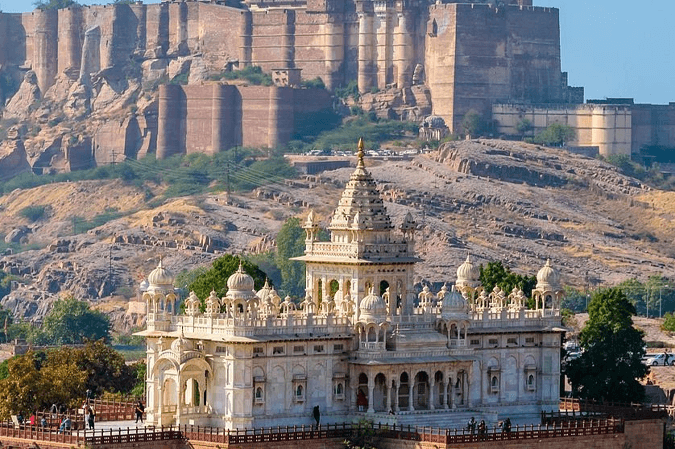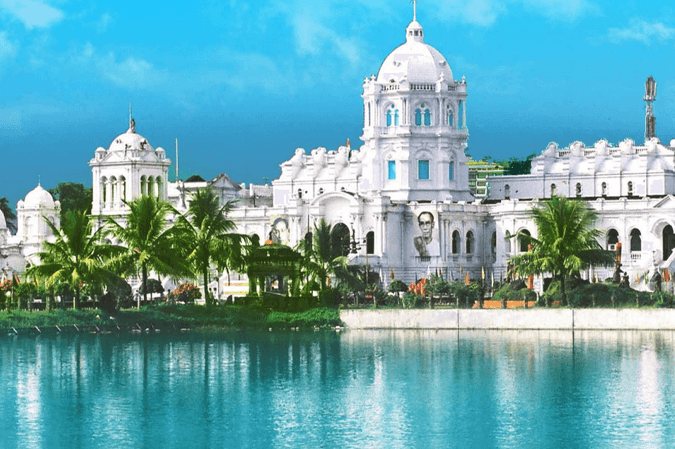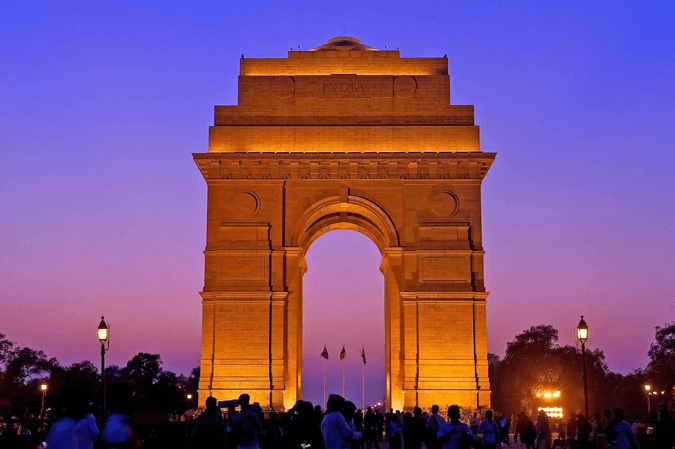History
Rajasthan has a rich and varied history:
- Ancient Period: Rajasthan’s history can be traced back to the Indus Valley Civilization, with several archeological sites, such as Kalibangan, showcasing this ancient culture.
- Medieval Period: Rajasthan saw the rise of the Rajputs, a warrior class known for their bravery, chivalry, and architectural achievements. The state was a collection of princely states such as Mewar, Marwar, Amber, and Bikaner. The Rajputs built magnificent forts and palaces during this period.
- Colonial Era: Rajasthan came under British control in the early 19th century. The princely states were allowed autonomy but were subject to British suzerainty.
- Post-Independence: After India’s independence in 1947, Rajasthan was merged from the various princely states to form a single state. It officially became Rajasthan on March 30, 1949.
Landscape and Area
Rajasthan covers an area of 342,239 square kilometers, making it the largest state in India:
- Thar Desert: The western part of Rajasthan is dominated by the Thar Desert, also known as the Great Indian Desert. This arid region is characterized by sand dunes, sparse vegetation, and extreme temperatures.
- Aravalli Range: The Aravalli Range, one of the oldest mountain ranges in the world, runs diagonally across Rajasthan from northeast to southwest, providing a contrasting landscape of hills and forests.
- Rivers and Lakes: Although largely arid, Rajasthan has several rivers like the Chambal and Banas, as well as lakes such as Pushkar Lake, Sambhar Lake (India’s largest inland salt lake), and Udaipur’s Lake Pichola.
Climatic Conditions
Rajasthan’s climate varies greatly due to its vast area:
- Desert Climate: The western part, especially the Thar Desert, experiences extreme temperatures with scorching summers (temperatures reaching up to 48°C) and cold winters. Rainfall is sparse and occurs mostly during the monsoon season.
- Semi-Arid Climate: The eastern and southeastern parts of Rajasthan have a semi-arid climate, with moderate rainfall and temperatures.
- Hill Stations: Mount Abu, located in the Aravalli Range, enjoys a more temperate climate and serves as a hill station and retreat for residents of nearby cities.
Historical Places
Rajasthan is known for its grand historical structures, many of which are UNESCO World Heritage Sites:
- Amber Fort (Jaipur): A magnificent fort known for its artistic Hindu-style elements, blending both Rajput and Mughal architecture.
- Mehrangarh Fort (Jodhpur): One of the largest forts in India, known for its intricate carvings and stunning views of the city below.
- City Palace (Udaipur): A sprawling complex that showcases a blend of Rajasthani and Mughal architecture.
- Jaisalmer Fort: Known as the “Golden Fort,” it is one of the largest living forts in the world.
- Chittorgarh Fort: A symbol of Rajput valor and sacrifice, it has witnessed several sieges and battles throughout history.
- Hawa Mahal (Jaipur): Also known as the “Palace of Winds,” it is famous for its unique five-story façade with numerous windows.
Festivals
Rajasthan’s festivals are vibrant and deeply rooted in its culture and traditions:
- Pushkar Camel Fair: Held annually in Pushkar, this festival is one of the largest camel fairs in the world, attracting tourists and traders from around the globe.
- Desert Festival: Celebrated in Jaisalmer, this festival showcases the culture of Rajasthan with camel races, folk dances, and traditional music.
- Teej Festival: Celebrated mainly in Jaipur, this festival marks the arrival of the monsoon and is dedicated to the goddess Parvati.
- Gangaur Festival: Celebrated by women across Rajasthan, this festival is dedicated to Goddess Gauri and is marked by processions and festivities.
Environment
Despite its arid conditions, Rajasthan has a diverse environment:
- Flora: Rajasthan has a variety of desert plants, such as khejri, cactus, and acacia. The eastern parts of the state have forests with trees like teak and sal.
- Fauna: The state is home to several wildlife species, including the Indian leopard, Bengal tiger, blackbuck, and the endangered great Indian bustard. Rajasthan has several wildlife sanctuaries and national parks, including Ranthambhore National Park and Sariska Tiger Reserve.
- Conservation Efforts: Rajasthan has undertaken several conservation efforts, especially for its tiger population. Sanctuaries like Keoladeo National Park, a UNESCO World Heritage Site, are known for their rich birdlife.
Society and Culture
Rajasthan’s society is a mix of modernity and tradition:
- Tribes and Communities: The state is home to several tribes, including the Bhils, Meenas, and Rajputs. Each tribe has its own customs, languages, and traditions.
- Art and Craft: Rajasthan is famous for its handicrafts, including block printing, blue pottery, and puppet making. The state’s traditional textiles, jewelry, and paintings are also highly sought after.
- Cuisine: Rajasthani cuisine is known for its rich flavors, with dishes like dal baati churma, gatte ki sabzi, and laal maas being popular. The food is often spicy and makes use of local ingredients like millet and bajra.
Interesting and Hidden Facts
- Colorful Cities: Rajasthan’s cities are often referred to by colors—Jaipur as the Pink City, Jodhpur as the Blue City, Udaipur as the White City, and Jaisalmer as the Golden City—due to the distinct colors of the buildings in these cities.
- Oldest Mountain Range: The Aravalli Range, which passes through Rajasthan, is one of the oldest mountain ranges in the world, predating the Himalayas.
- Living Forts: Jaisalmer Fort is one of the few “living forts” in the world, with a significant portion of the old city’s population still residing within its walls.
- Hawa Mahal’s Windows: The Hawa Mahal in Jaipur has 953 small windows called jharokhas, designed to allow the royal women to observe street festivities without being seen.
Sources
- Government of Rajasthan official website
- Encyclopaedia Britannica
- Rajasthan Tourism Development Corporation
- Historical texts and cultural studies on Rajasthan
- UNESCO World Heritage Centre data
- Image Source: tripadvisor.com



